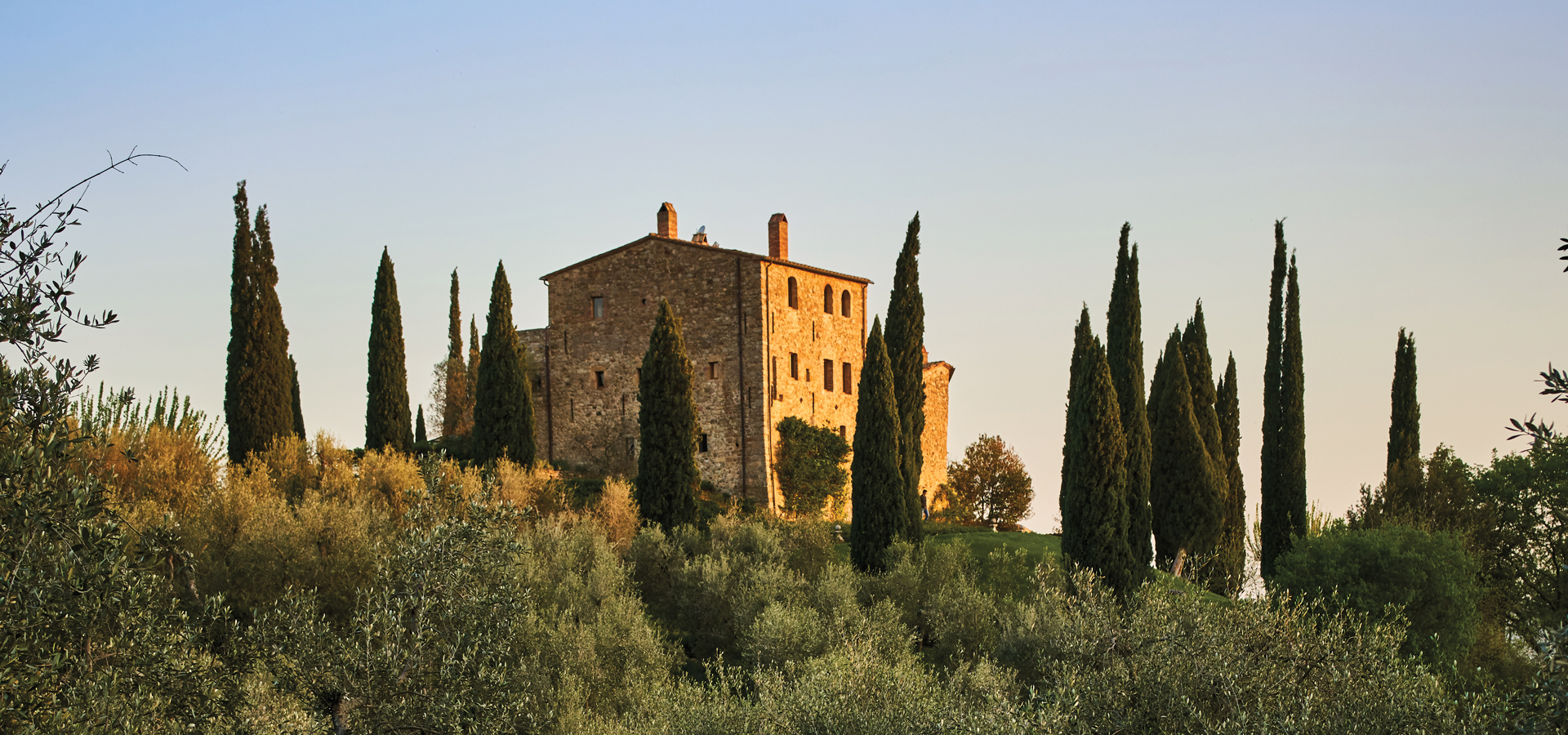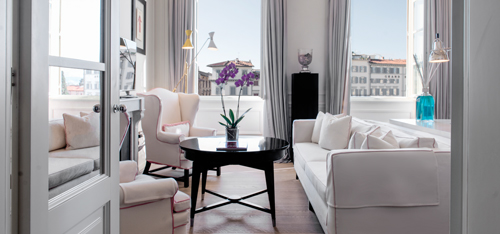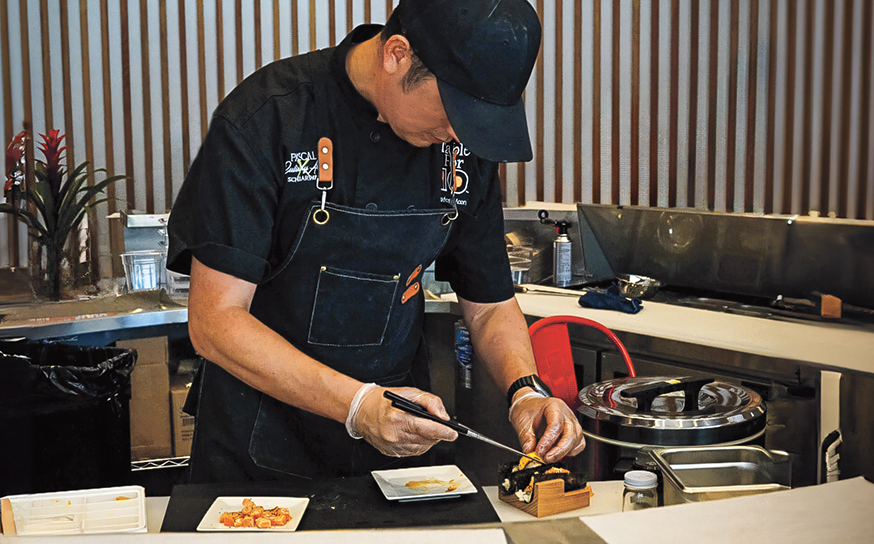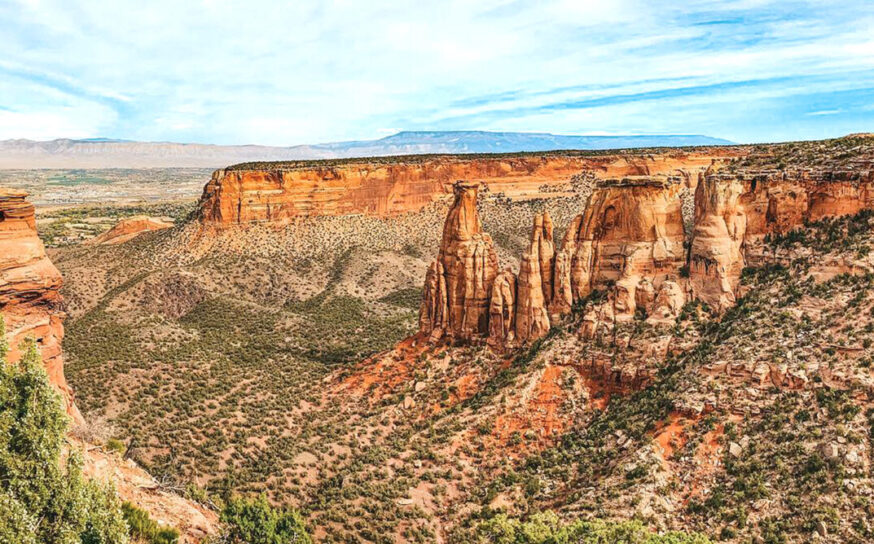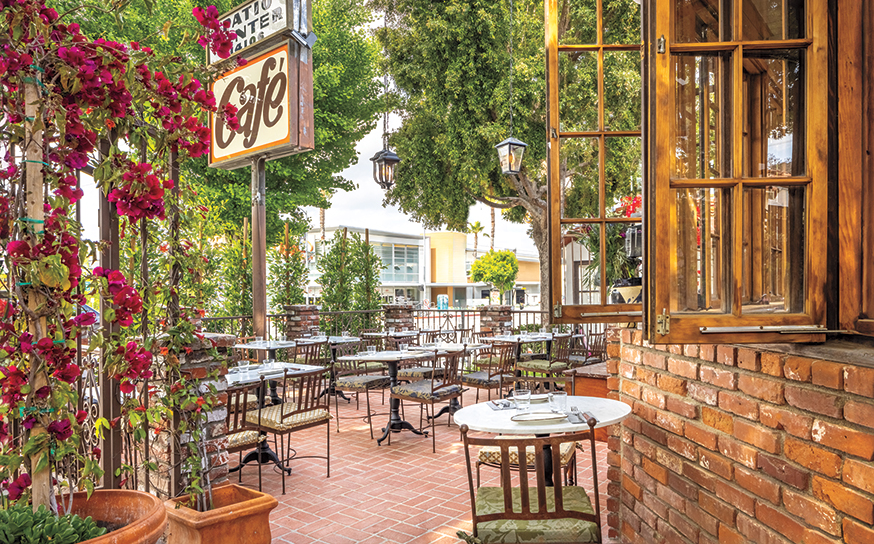Wine and Dine Your Way Through the Tuscan Countryside
An idyllic getaway for two foodies.
-
CategoryEat & Drink, Travel
-
Written byStaness Jonekos
-
Photographed byMichael Becker
Cradled by green, velvet rolling hills, Tuscany slumbers in the center of Italy—the undisputed home of organic cuisine and regional wine. Sure, some tourists come for the fine art. Others aspire to cycle through the countryside or hone their Italian skills. For my husband and me, both spoiled by the cuisine of California, where organic is all the rage, visiting Tuscany was purely about taking it to the next level—a full-fledged immersion into the farm-to-table experience. As we saw it, nothing stood in our way, even if it meant sacrificing our waistlines.
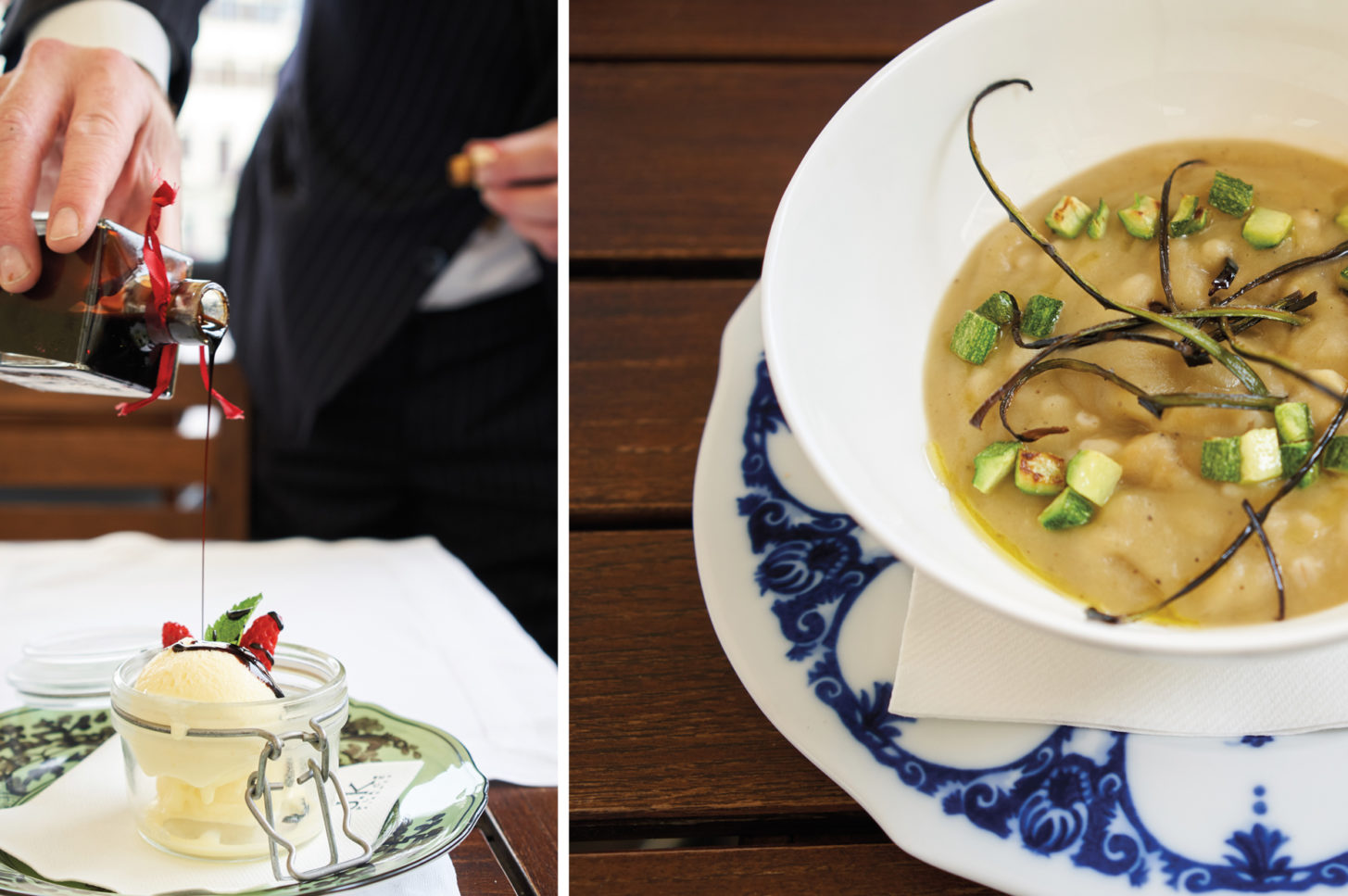
SOUP’S ON Two taste sensations from J.K. Place in Florence. Zucchini and bean soup and vanilla ice cream with aged balsamic vinegar drizzled on top.
Florence
Our first calorie-rich stop was Florence, the capital of Tuscany and birthplace of the Renaissance. This is a walking city, and it was only a six-minute stroll from the Florence train station to our fashionable hotel, J.K. Place, voted one of the world’s “sexiest” hotels.
After a delightful “welcome drink,” food and wine expert Andrea Peiri escorted us to the front patio to begin our dining experience, starting with their famous bread, pane toscano.
My husband, Michael, and I noted that, while delicious, the bread tasted like it was missing something. Andrea revealed a colorful story from the Middle Ages about a blockade set up by the army of Pisa to prevent salt shipments to Florence. In the relaxed Tuscan philosophy known as “dolce far niente,” meaning the “sweetness of doing nothing,” the Florentines kept on making bread and just left out the salt.
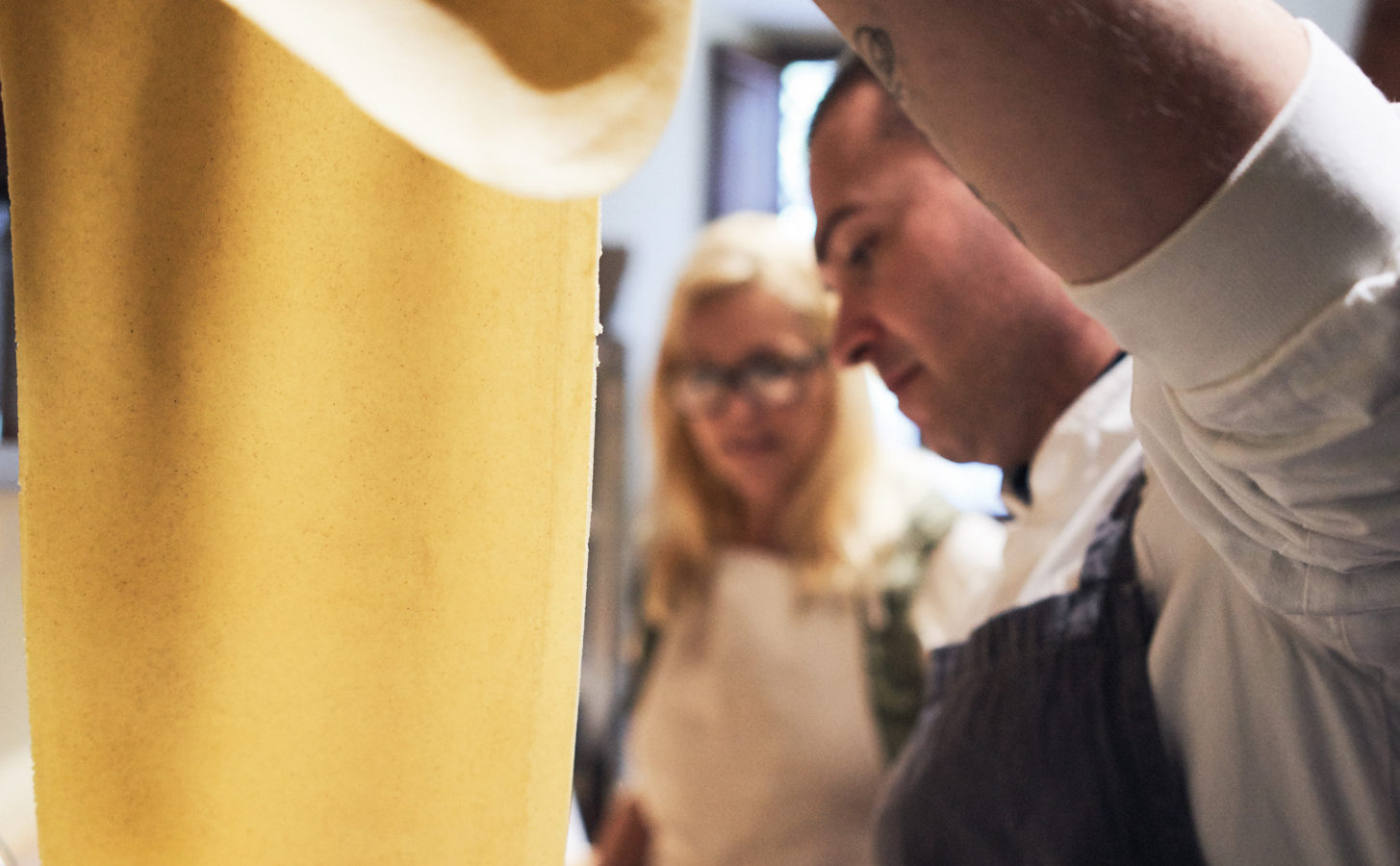
The writer attends a private pasta making class
After a tutorial of Tuscany’s wine regions, we began our evening with a Chianti Classico. Antipasto, with the traditional insalata caprese, made with a ball of buffalo mozzarella and drizzled with Italian olive oil, arrived next. Tuscan olive oil is as prized as their wines, since it takes skill to decide when to harvest the olives to determine optimal flavor and taste. Unlike wine, it does not get better with age.
Andrea expertly capped our meal with homemade vanilla ice cream, topped with 100-year old balsamic vinegar, a delicacy of Giusti 100 Modena. This gold medal-winning balsamic exploded in our mouths with a bouquet of aromas from cherry, cocoa and licorice. I pondered whether I’d ever be able to enjoy ice cream without it.
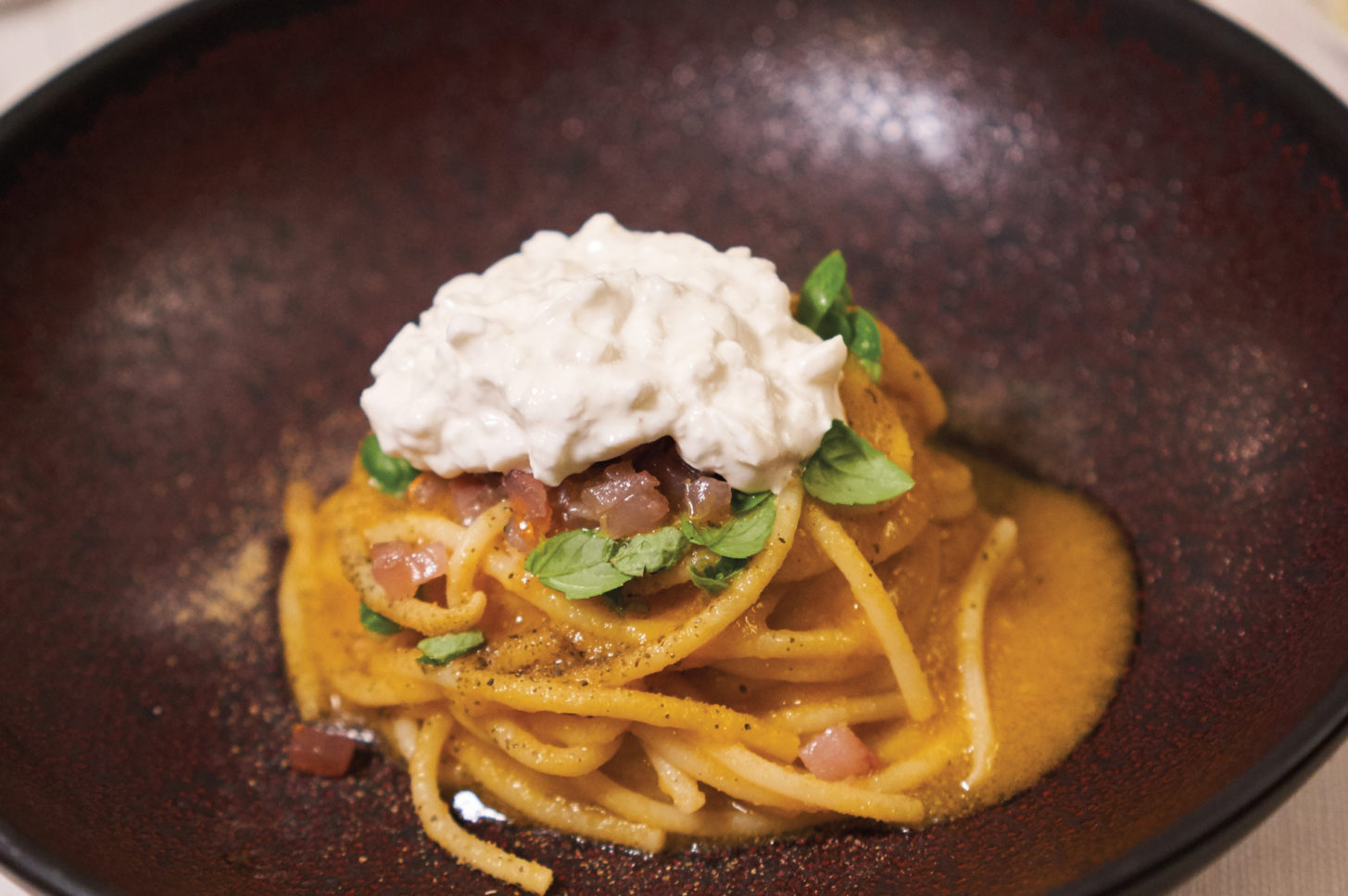
Spaghetti Martelli served at Borgo Pignano
Tuscany, Borgo Pignano
Next we were off to Borgo Pignano, a 750-acre organic country estate near the famous medieval towns of Volterra and San Gimignano.
Our picturesque drive awakened every sense, as we traveled through the mustard bloom-filled hillsides. Arriving at Borgo Pignano was like entering a time warp. Suddenly we were back in the ancient days.
This noble villa has luxurious views in every direction. Our elegant room featured original frescoes on the ceiling, glass chandeliers and a window that perfectly framed the stunning landscape. The travertine bathroom, accented with handpicked flowers, was stocked with homemade lavender soap.
We started our adventure in their dimly lit, medieval wine cellar with Francesco Dell’ Aiuto, the restaurant manager and sommelier.
Francesco presented an organic Chianti Classico. He explained that all wines from this region have a trademarked seal of the black rooster, a symbol from a medieval legend representing the Chianti territory.
Our sommelier shared that the next bottle was vegan. You might think all wine is vegan, but many vineyards use compost that contains ground up animal horns.
The first meal at Villa Pignano Restaurant gave new meaning to the term “fresh.” All the ingredients were harvested from the property’s farm, within hours of being served.
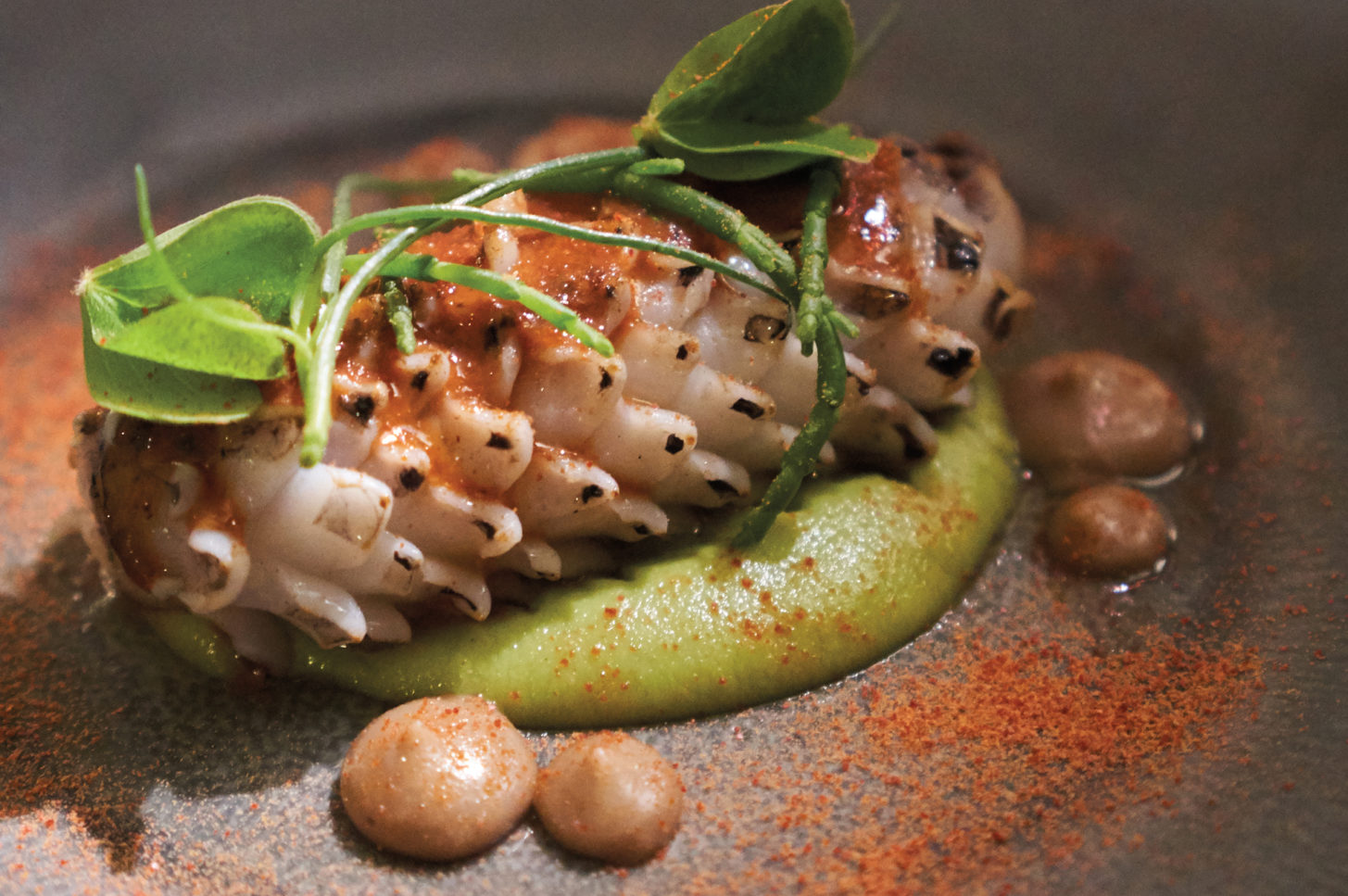
Villa Pignano Ristorante’s Cuttlefish
The starter dish, Sautéed Cuttlefish with Bread and Pecorino Cream Sea Urchins with Fresh Broad Beans, offered a combination of flavors that was nothing short of dreamy.
Then we slid into the first course. Dubbed, Pasta Martelli, after the Italian artisanal pasta company, the spaghetti noodles were topped with yellow tomatoes, seasoned burrata cheese and tuna tartare.
The next day we joined Vincenzo Maetella, the executive chef of cuisine, to harvest the herbs from his organic garden. His passion for fresh, organic food and good health was fueled by his grandfather, who ate only what he grew and enjoyed a glass of wine every day. According to Vincenzo, he lived to be 100.
Looking so peaceful and content in his garden, Vincenzo spoke about his job, summing it all up with, “This is not work, it’s my life!” His philosophy is simple: pick it, cook it, eat it.
We followed Vincenzo and his selection of herbs to the kitchen for a pasta-making class. More than merely preparing various dishes, for me, it was an introduction to the art of pasta.
As we enjoyed our last sunset, soaking in the amber colors glowing over the horizon, the villa’s master mixologist delivered chilled cocktails. It was the perfect bookend to three heavenly days.
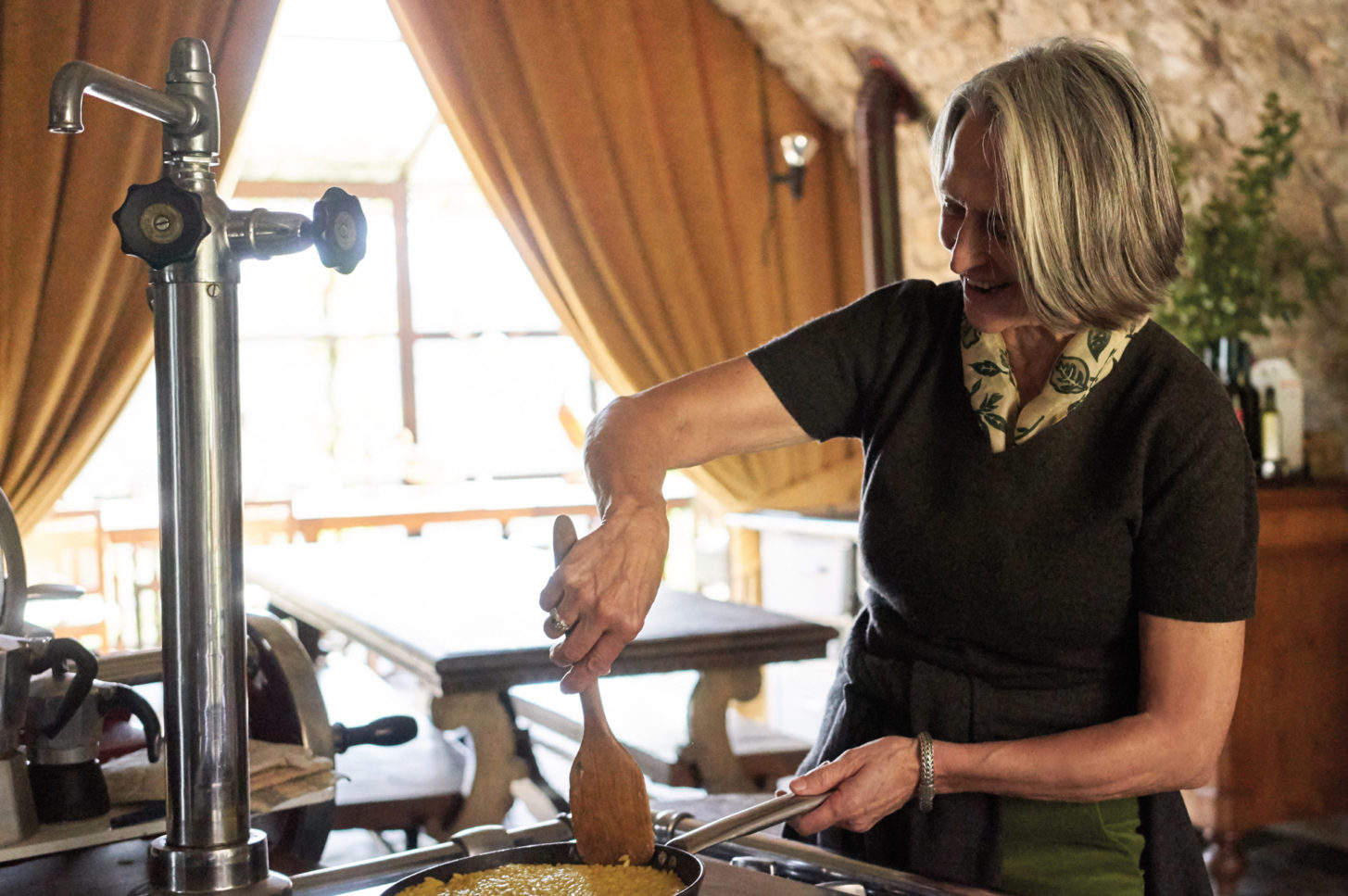
Fried risotto being prepared at Castello Di Vicarello
Tuscany, Castello Di Vicarello
Next we were off to Castello di Vicarello, just two hours south. We took our time touring the colorful countryside with sleepy towns and zero traffic, until we found ourselves at the end of a narrow dirt road.
Located in the Grosseto Maremma area was a majestic 900-year-old castle resting quietly on a hilltop, surrounded by vineyards and ancient olive trees. This 100-acre, fairy-tale property is called Castello Di Vicarello.
The Baccheschi-Berti family rescued these ruins and lovingly restored the property. The historic origins were carefully preserved and contemporary luxury was incorporated, creating a unique, secluded Tuscan experience.
It wasn’t long before Carlo, the indomitable patriarch of the family, and his eldest son Brando, who is now in charge of the estate’s winery, presented their award-winning vintages.
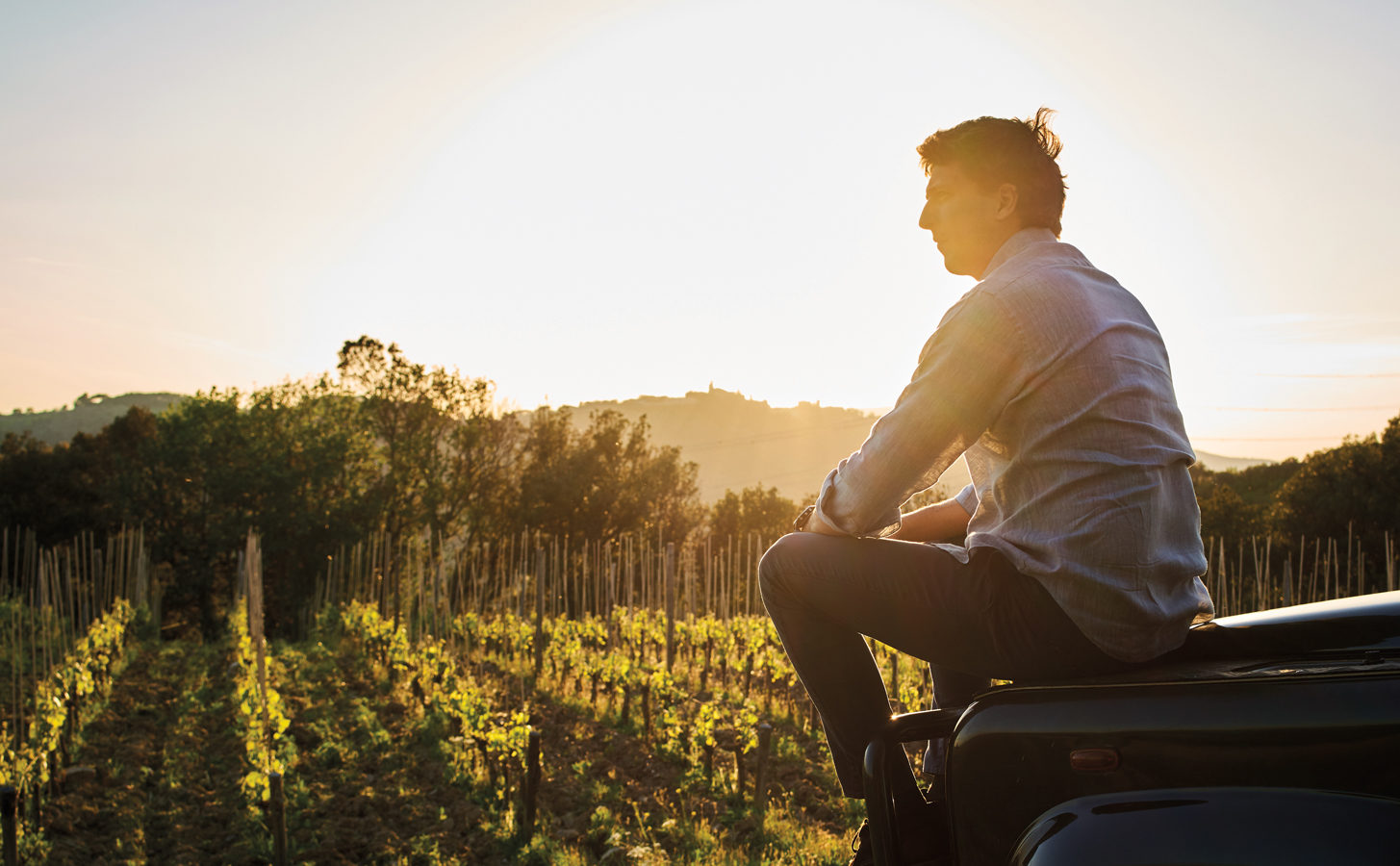
Brando Baccheschi Berti over- looking his award-winning vineyards at Castello Di Vicarello
All Castello’s wines are certified organic and 100% of the grapes used are grown on the estate. They were one of the first vineyards in the area to cultivate old-style growing practices, like planting mustard with the vines to support the soil and protect against bugs.
The next day I had a craving for caprese (again) and wanted to enjoy it with a glass of wine by the pool. Michael was after some greens and ordered the Chicory Leaves with Poached Egg. Our meal was sourced from the property’s organic garden and vineyards.
It was time to explore the heart of this historic castle—a spectacular, bustling kitchen where all the meals are prepared. Aurora, the so-called lady of the castle, was busy at her vintage 1957 Triplex gas stove that she “found in a field” and had restored. In her self-proclaimed “magician’s cave,” she readily offered up advice: “Keep it simple and use organic ingredients.”
Castello Di Vicarello is the true Italian experience—intimate and relaxed with stunning views, all enjoyed in complete luxury.
When we got back to reality, we were both terrified of stepping on the scale after so much pasta and wine. We felt certain we’d be horrified to discover 10 extra pounds, but we were shocked to find we each actually lost 3 pounds! How could that be possible? It seems a bon appetite, enjoyed in the company of people who embrace “dolce far niente,” the sweetness of doing nothing, can be truly rewarding.
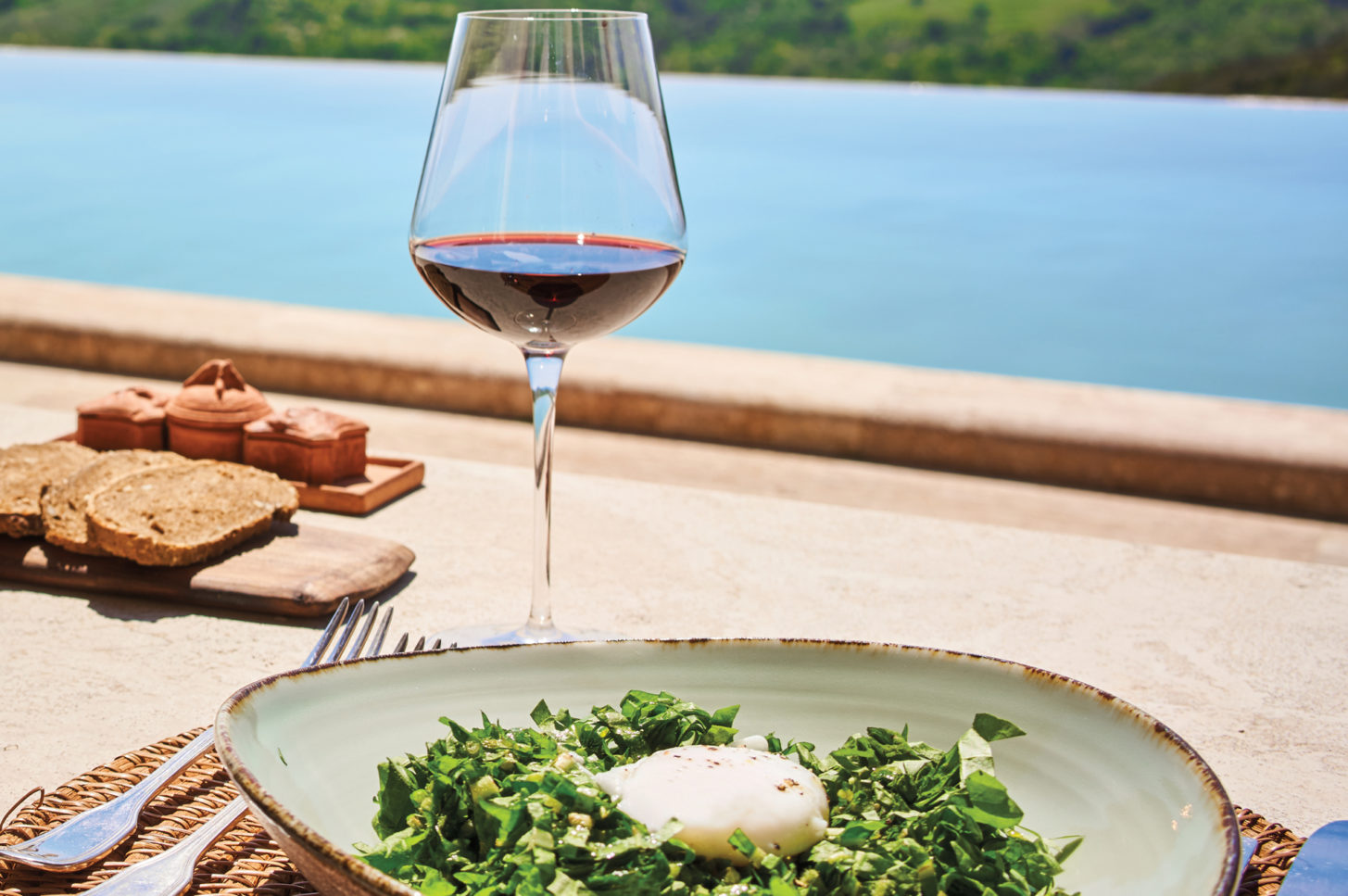
Chicory Leaves with Poached Egg Salad, enjoyed poolside at Castello Di Vicarello
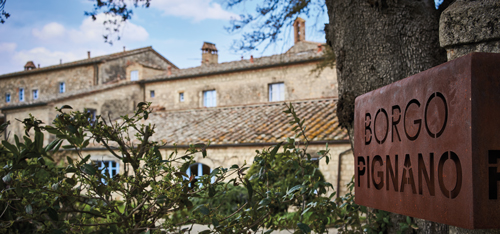
Borgo Pignano, Tuscany
14 elegant rooms, suites, maisonettes and cottages
Starting at $278
borgopignano.com
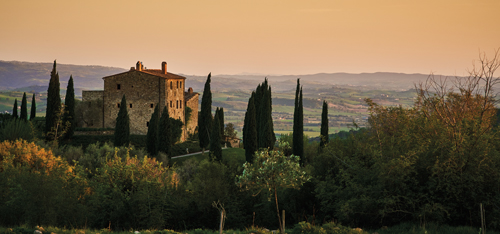
Castello Di Vicarello, Tuscany
8 signature suites with a blend of modern and antique
Starting at $684
castellodivicarello.com
Join the Valley Community






